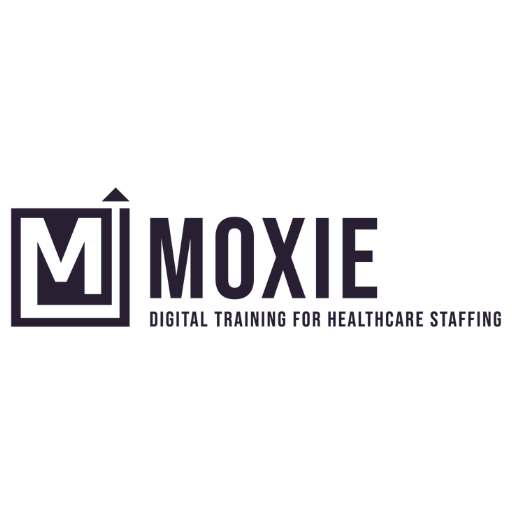By: Adam Gomez
Healthcare staffing firms have been hit hard recently as a result of the ongoing COVID-19 pandemic. With a large number of firms reporting at least a 30% decrease in working travelers many leaders are wondering privately what the future will hold.
A sharp decline in revenue has led some firms to layoff members of their internal team. Others have eliminated OT, and a few have suspended employee benefits. Still, some firms have found this to be an opportunity for revamping strategy, improving internal procedures, and enhancing training initiatives.
Two key questions healthcare staffing firm staff are pondering are; “How long will the market contraction persist?” and, “What will the long-term impact of the COVID-19 pandemic be on the market?”
The truth is that nobody knows the answer to either of these important questions. There are a lot of guesses floating around but with so many unknowns, it would be impossible to predict. However, if the industry has proven one thing over the years, it is resiliency. With that said, there are some important factors which will in large part determine what the healthcare staffing market looks like in the future, and how quickly the market recovers:
Payer-mix.
Hospitals saw costs increase as they ramped up staffing and supplies for the COVID-19 peak. For example, the New Jersey Hospital Association recently reported an increase in expenses of 10.6%, or $214 million per month (link to source: https://www.roi-nj.com/2020/05/19/healthcare/report-covid-19-results-in-financial-challenges-for-n-j-s-hospitals/). The stoppage of the majority of elective and outpatient surgical procedures resulted dramatic declines in revenue. Vivian Ho, a health economist and professor at Rice University in Houston states, “I’m seeing multiple health systems reporting revenue losses that are 50% or more”. (link to source: https://www.washingtonpost.com/business/2020/05/04/financial-distress-among-doctors-hospitals-despite-covid-19-weighs-heavily-economy/). And the triple whammy is that as more become unemployed and lose employer healthcare coverage, the ratio of patients’ utilizing Medicare versus a private insurance payer is increasing. According to a recent publication by Henry J. Kaiser Family Foundation, private insurers pay nearly double Medicare rates for all hospital services (link to source: https://www.kff.org/medicare/issue-brief/how-much-more-than-medicare-do-private-insurers-pay-a-review-of-the-literature/)Additionally, the number of uninsured Americans is on the rise further adding to the financial struggles of hospitals and health systems in the form of bad debt. And while Congress has committed $1 billion to cover testing for COVID-19 for those who are uninsured, and a portion of the $100 billion-dollar funding package towards treatment of these patients, there has yet to be any relief for other services rendered to those without coverage.
Complicating matters further, outpatient services, which in recent years have become a growing source of revenue for hospitals, were shut down entirely during the COVID-19 outbreak and these services are paid at a rate on average of 264% of Medicare rates – nearly 3 times the Medicare rate. This further exacerbates hospital revenue losses tied to the shutdown of these services. Although the CARES Act did include an increase in Medicare reimbursement rates by 20% there still remains a large gap given the increase in uninsured and Medicare/Medicaid payers being introduced to the healthcare system. The sooner businesses are able to rehire employees that were temporarily furloughed, and the unemployment rate improves, the sooner hospitals will begin to see a shift in payer-mix as employees return to their employer-provided health coverage plans. According to the CBO, unemployment rates are expected to average 15% for Q2 and Q3 and slowly improve to 11.5% in Q4. Based on these projections it seems most likely there will be limited relief until late Q3 or into Q4, and modest improvement in unemployment rates is projected by the CBO for 2020. (link to source: https://www.cbo.gov/publication/56368#_idTextAnchor011)
Consumer confidence with regard to personal safety.
As states begin to re-open parts of their economy, it remains unclear how quickly and to what extent consumers will jump right back into pre-COVID 19 routines. As businesses re-open, will employees return to work? And will individuals feel safe enough to schedule medical appointments for non-urgent matters? Making policy change to open the economy back up is only part of the solution. Some business leaders are finding it difficult to hire employees back given the added benefits they are receiving as a part of the CARES Act, which provides an additional $600 on top of the standard unemployment benefit. It is unlikely Congress will extend this benefit, which is set to expire near the end of July.
Hospital volumes (census).
Patient volume is down across the country, with the exception being hotspots in parts of the country hit hardest by COVID-19. This is primarily the result of stay-at-home orders requiring people leave their homes only for essential trips. With more people staying home, fewer and fewer accidents and injuries are occurring – leaving many hospital beds empty. Another reason for the decline in hospital volumes is the stoppage of elective or non-emergent surgical procedures. As states begin to re-open, we can expect hospital volume will increase. However, it’s uncertain whether public fear will prevent many from going to the hospital. And it is not clear how hospitals will manage a backlog of pent up demand while also ensuring the safety of their patients and staff. Will they have adequate PPE stockpiles to return to normal patient volumes, while also preserving an adequate backup supply in the event of a potential second wave of COVID-19 patients?
Healthcare worker’ burnout and fatigue may also play a large role in shaping the healthcare staffing market in the near future. Time magazine recently published an article citing a study published in the medical journal JAMA which found that, 50.4% of healthcare workers working with COVID-19 patients, reported symptoms of depression, 44.6% reported symptoms of anxiety and 71.5% reported distress. They noted that the study found that “nurses and other frontline workers were among those with the most severe symptoms”. Although we have no clear way of understanding the impacts this pandemic will have on healthcare worker burnout it seems plausible some healthcare workers may decide to leave the workforce. In particular, those nurses who are nearing, or of retirement age, may opt to retire from the profession. Kamana Health recently published an article on this topic (link to source: https://www.kamanahealth.com/covid-19-healthcare-staffing-impact/ ).
A second wave of COVID 19 is something that could have a significant impact on the healthcare staffing industry. If a second wave were to rip through the U.S., we could see a similar spike in demand for healthcare professionals. But a second wave of COVID-19 paired with a typical seasonal flu season could stress hospital staff and resources even greater than the initial wave. The impact of a second wave will in large part depend on the ability of hospitals across the country to adequately source stockpiles of PPE and to rapidly source and deploy healthcare professionals that will be needed should a second wave occur. The economic devastation created by shutting down the economy during the initial wave of COVID-19 may prevent the federal and state governments from imposing such aggressive restrictions a second time. And unfortunately, because we are in an election year, it is likely that politics will play a role in the policies that are developed should this become a reality. One thing is clear, staffing firms and hospitals must be prepared for worst-case scenarios.
Financial solvency for all parties has and will continue to be put to the test. Hospitals were already operating on narrow margins and many, especially rural hospitals, may be forced to shut down in the absence of additional financial support. Similarly, smaller and newer staffing firms, will have an even more difficult time as larger companies opt to fill the limited number of openings, rather than release them to be filled by supplier firms. Furthermore, those firms that had operated on narrow margins to gain initial traction in the market are extremely vulnerable right now. It is imperative that staffing firms consider the potential risks associated with various partnerships whether they are between the firm and hospital (direct), or between the firm and a third-party (e.g., managed service provider). In addition, staffing firms would be wise to assess the relative risk-reward that comes with staffing a substantial number of healthcare professionals within a single hospital, health system, or third-party. In the aftermath of the recession of 08’-09’ many staffing firms were unable to collect on invoices when some hospitals and third-party vendors filed for bankruptcy protection causing many firms to close shop. It is worth noting most staffing firms are considered unsecured creditors, raising the significance that risk assessment plays in protecting the financial security of each firm. Importantly, these considerations should be made on the inverse as well (e.g., hospitals should consider the financial solvency of the firm). When the dust clears there will undoubtedly be casualties which result from the financial devastation created by the COVID-19 pandemic on both the agency and hospital side.
There are certainly more questions right now than answers. But in understanding some of the key factors at play healthcare staffing leaders can monitor the conditions on the ground and develop and adapt a clear strategy for success. The industry will survive. It has proven itself in its ability to rebound from past recessions, pandemics, and various national emergencies. The staffing firms that will come out of this pandemic stronger are focused on developing strategic partnerships with peer agencies, improving internal talent, and investing in comprehensive training solutions. These firms are choosing to view the current state of affairs as an opportunity. An opportunity to come out of this pandemic in a position to capitalize as the market rebounds.





